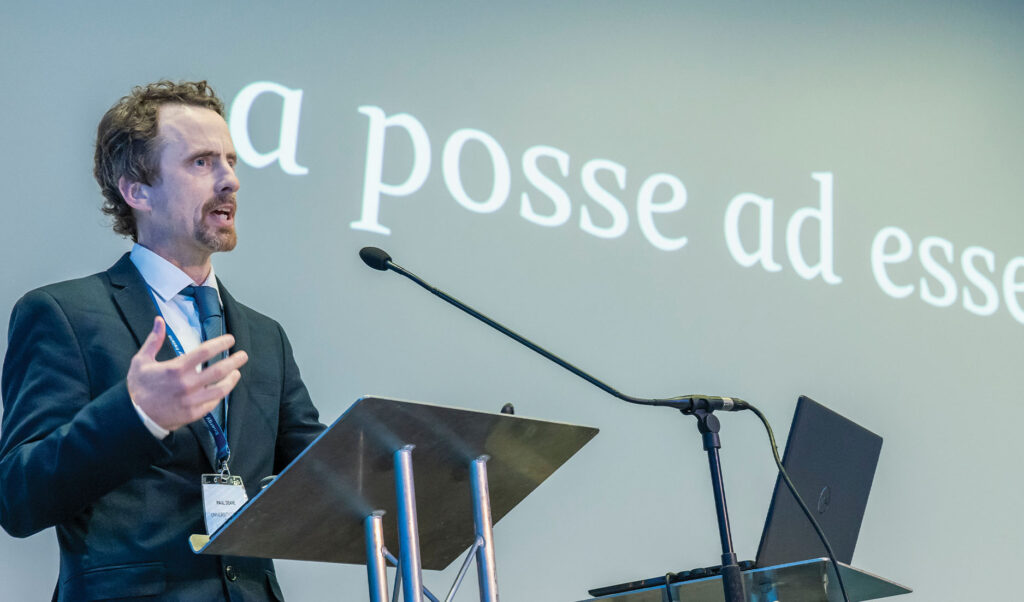
RESS 5 provisional auction results published
13th October 2025
Achieving net gain from offshore wind farms
13th October 2025Energy demand and data centres

Ireland cannot meet its power sector decarbonisation targets while simultaneously maintaining or upscaling data centre development and the Government must set strategic priorities to address this fact, Paul Deane, senior researcher in clean energy futures in University College Cork, tells Energy Ireland.
“What is possible is not always achievable,” says Deane, translating the Latin phrase “a posse ad esse”. He links this to the Government’s contradictory efforts to develop data centres while achieving decarbonisation targets. “We cannot have it all because we cannot do it all,” he adds.
Deane asserts that strategic national priorities must be set for data centres by 2030, and choices must be made between those that deliver economic value and those that help achieve decarbonisation targets. He states that “scarce resources” must be allocated to deliver infrastructure and that priorities must be established regarding energy, renewables, and economic development.
“The Government has too many number one priorities,” says Deane. “That is admirable, but when you have scarce resources, it is not possible. A posse ad esse.”
Challenges
The senior researcher states that data centres benefit economic development, the labour market, and society. “So, what is the problem?” asks Deane.
The answer: “Ireland is very quick at building data centres, but very slow at building renewables. This puts pressure on grid delivery, system operation, renewable targets, energy efficiency targets, and climate targets.”
Stating that Ireland is currently at around 40 per cent renewable electricity penetration, the senior researcher explains that Ireland must achieve the legally binding target of 80 per cent by 2030 outlined in the Climate Action Plan.
However, the 2030 target is influenced by data centre build-out, renewable supply, and demand. Deane outlines three scenarios of data centre build-out and their impact on renewable electricity penetration by 2030.
- low-build out: 74 per cent RES-E;
- medium build-out: 65 per cent RES-E; and
- high build-out: 59 per cent RES-E.
Deane says Ireland is currently following a medium build-out of data centre demand. If this continues, the state must deliver 700MW in onshore renewables every year from 2025 to 2030 to achieve its 80 per cent target. He states that Ireland usually delivers between 400MW and 500MW a year.
“In our effort to try and please everyone and do everything, we will probably end up getting nothing done over the next four years.”
Paul Deane, Senior Researcher, University College Cork
Deane asserts that Ireland’s slow build-out of renewables has “spillover effects into climate targets”. Ireland’s Low Carbon Development Act 2021 embedded the carbon budgets into law, limiting Ireland’s power sector to the production of 60 MtCO2eq over two periods, 2021-2026 and 2026-2030.
Deane references an EirGrid study submitted for Climate Action Plan 2023 which found that this target will be missed if a high build-out of data centre development is followed. This, he says, highlights that Ireland must pursue a low build-out to achieve these legally binding targets.
The senior researcher acknowledges that technologies like EVs and heat pumps will increase GHG pollution in the power sector, but adds that they will remove “about three times” this amount from transportation and residential sectors respectively. In contrast, data centres are an additional load to the power sector. Deane says this presents two questions: “What are we doing? Where are our priorities?”
Social issue
He also addresses how the Government can reconcile decarbonisation targets with economic ambition by monetising GHG pollution using a concept called ‘the social cost of carbon’. This is a method to monetise the damage caused by one tonne of carbon to society, humanity, and the environment.
The senior researcher outlines that the social cost of carbon Ireland is between €400 to €500 per tonne. Deane says that to compensate for the 1.2 MtCO2eq data centres are forecast to produce between 2026 and 2030, their economic return would need to exceed €500 million. As resources must already be applied to decarbonise existing loads, data centre developments exacerbate the problem, making it “a social issue”.
Demonstrating this, Deane says ESB Networks was tasked with developing Ireland’s distribution network. Due to a lack of government policy and guidance on data centre development, the build-out of the distribution grid responds to organic population and economic growth, but not data centre growth. This can result in data centre taking parts of the network developed to be taken by housing.
“We have got these competing and conflicting social, economic, environmental, and climate obligations that are all worthy, worthwhile, necessary, and admirable, but we have limited resources to achieve them,” says Deane. “In many ways we have to run very, very fast just to stand still.”
Deane asserts that the CRU and EirGrid “have been put in very difficult positions by the Government”, adding that the Government needs to provide guidance on how data centres are strategically chosen, and how scarce resources are allocated. The senior research also indicates that the Government must acknowledge that it “cannot back every horse in this race”.
Concluding, he says: “In our effort to try and please everyone and do everything, we will probably end up getting nothing done over the next four years.”

